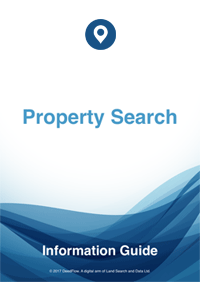Checking your Flood Risk
Contents
Article Summary
Flooding in household neighbourhoods can occur due to any one of three reasons, and often more than one reason occurs at the same time. We am referring to flooding from rivers and seas, from surface water (heavy rain) and from groundwater. In this article we explain what each type of flooding is and how you can obtain the correct report to know if your property is liable to flooding, or if it has ever been subject to flooding in the past.
Intruduction
The risk of flooding in England and Wales may be caused from 3 different water sources, i.e.
- Flooding from Rivers and the Sea
- Surface Water Flooding - Rainwater
- Groundwater Flooding
Flooding during recent years has been severe in many areas and so it is important for us all to become informed of such risks in our neighbourhood, and more so when moving house. Recent official assessments state that 1 in 6 homes are at risk of flooding. As this is likely to be a result of climate change, it seems that the position will only worsen.
The risk of flooding in England and Wales is a major natural hazard that currently affects 1.85 million homes. Official estimates indicate that about 5 million people in our country are at risk of flooding, as major flood risk areas are often densely populated.
Historically, there have been some very considerable flood events, notably the 1947 riverine floods, the 1953 East Coast Floods, the 1998 riverine Easter Floods and the Autumn 2000 Floods, all of which have been determined as being more than major regional events, but from which major lessons have been learned.
There is an enormous amount of information available on this subject, which can be quite confusing, and so the purpose of this article is to focus on the essential matters, and indicate where to go to obtain the most useful information.
Detailed Reports on Flood Risk are available online for readers who wish a more detailed level of information concerning their own property and neighbourhood. Of these the most popular report is provided by the Environment Agency. Links to this report are in the sidebar. The contents of this report are discussed further below, together with links to other agencies providing similar reports.
Flooding from Rivers and the Sea
The government have in place a network of monitoring stations throughout England and Wales, whose purpose it is to maintain a check on river and sea levels. Information is freely and readily provided by entering your postcode on the government page. The same page can be viewed at a high zoom level to obtain the location of each monitoring station. Monitoring stations are indicated with blue circles, which change to orange where flooding is possible.
On entering your postcode the page changes to the monitoring stations in your area and provides a link to each of them, from where more detailed information is provided.
https://flood-warning-information.service.gov.uk/long-term-flood-risk
Surface Water Flooding
Surface water flooding is caused by rainwater and is known by the more technical term of pluvial flooding. This type of flooding is caused when rainwater fails to drain away through the normal drainage systems or fails to soak into the ground. Unitary authorities are responsible for managing local flood risks, or if there is no unitary authority, the county council.
Groundwater Flooding
Groundwater flooding occurs where the local geological conditions cause flooding to occur underground, and then rises to the surface. Where rainwater is abnormally high this may result in flooded basements and to the actual ground surface.
Certain areas of the country are more susceptible to groundwater flooding than others, e.g. in chalk areas, and in river valleys with permeable superficial deposits.
The British Geological Survey provide a detailed report on this type of flooding, which is included in the Environment Agency report referred to above.
Historical Flood Risk Information
Increasingly helpful is the existence of historical information relating to flooding. Maps are available from the Environment Agency that detail historical flooding, and this information is supported by details of flooding events, i.e. the dates of flooding, type of flooding, and cause of flooding.
The Environment Agency Flood Risk Report
The Environment Agency's Flood Risk report is not the cheapest report available, but it is very thorough and the data is supported by detailed maps, each having detailed legends. The report is based on an area of 250 metres surrounding a given property, from data supplied by the Environment Agency and other agencies including the British Geological Survey and Norwich Union. It is divided into the following sections:
- Flooding from rivers and the sea
- Surface water flooding
- Groundwater flooding
- Historic flooding of all types
Although the length of the report varies according to the property it is often 25 pages or more in length with detailed information supported by detailed maps. This report is commonly used by solicitors when acting for clients moving to an area that may be prone to flooding.
This report is good value for money and would normally answer every customer's questions relating to flooding of all types in their area, both currently and historically.
We also provide, at no extra cost, a 47 page report from Historic England relating to historic flooding generally.
Environment Agency Flood Risk Report
The most comprehensive and detailed Flood Risk report available, providing information supported by detailed maps for Sea and River Flooding, Rainwater Flooding and Groundwater Flooding.
£54.95Land Registry Flood Risk Indicator
This is a 1 page brief overview of flood risks for an individual registered property.
£9.95Searching by map
We can identify land and buildings with pin-point accuracy even where there is no address. Our application form contains a built in map that allows you to mark or outline the land.
£29.95


